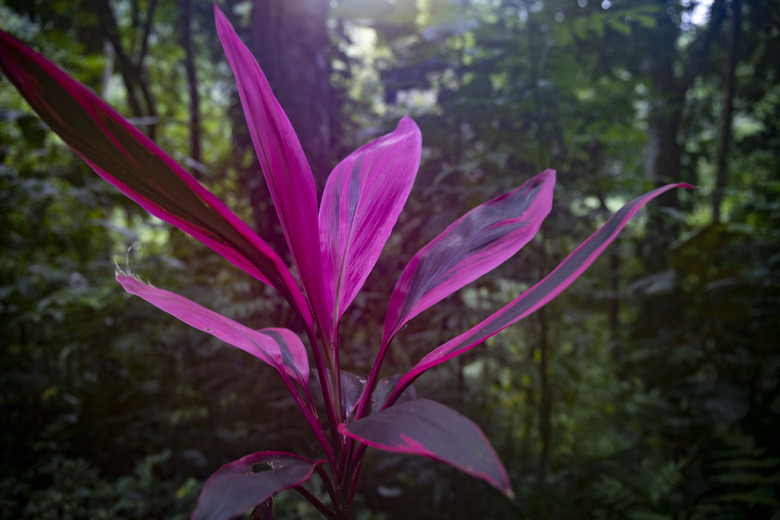How To Grow Cordyline Plants
Native to Eastern Asia and New Zealand, colorful cordyline plants (Cordyline spp.) make a striking addition to warm-weather gardens. As it's a plant that thrives in tropical climates, cordyline can't tolerate frost and doesn't do well in cool temperatures. Grown from cuttings or seeds, cordylines thrive in shade with some sunlight. In cooler temperatures, cordylines are grown indoors as houseplants.
Two common species of cordyline plants are the ti plant (Cordyline fruticosa, USDA zones 10-12) and the cabbage tree plant (Cordyline australis, zones 9-11).
Soil and Spacing
Soil and Spacing
The ti plant thrives in rich, fertile, well-drained soils. Plants grow 3 to 10 feet tall and 2 to 4 feet wide and thrive when planted 3 to 5 feet apart so they have room to spread out.
The cabbage tree grows slowly to 15 feet tall by 6 feet wide, with a bare gray trunk and branches topped with bushy heads of leaves. Space trees at least 20 feet apart so they have room to grow. A cabbage tree needs good drainage, preferring sandy to loamy soils rich in organic matter. As houseplants, plant both species on a well-draining houseplant potting mix.
Watering Requirements
Watering Requirements
The soil of moisture-loving ti plant should be kept moist while it is actively growing during spring and summer, but it requires less water in fall and winter. As a houseplant, the ti does best in a high humidity location year-round, such as a bathroom or on a tray filled with pebbles and water. Leaf tips will turn brown in low humidity. Cabbage trees also prefer moist soils when actively growing.
Light and Exposure
Light and Exposure
A number of cabbage palm cultivars have either purplish-red leaves or variegated leaves. Some variegated-leaf or lighter colored varieties can scorch in direct sunlight.
Grown outdoors, the ti plant and cabbage tree thrive in shade to partial shade. Plant ti plants with more colorful leaves in a sunnier but still partially shaded spot, with the less vivid plants residing in full shade. Houseplants need bright, indirect light, with morning sun for strongly colored cultivars.
Fertilizing Needs
Fertilizing Needs
Cordylines respond well to controlled-release fertilizers. Apply a product containing micronutrients with an N-P-K ratio of 14-14-14 every 6 months, or according to product-specific label directions. Topdress the soil around the plant with 1 tablespoon of fertilizer for a 1-gallon container or 7 tablespoons scattered over every 10 square feet of outdoor soil surface, always observing label directions for rates if they vary from this recommendation
Special Care Considerations
Special Care Considerations
Cordylines are generally not invasive, but Purple Tower has naturalized into some southern United States and parts of southern California. Ti plants are sensitive to cold temperatures and shouldn't be grown at temperatures below 55 degrees Fahrenheit. Most cordylines are damaged by near-freezing weather and should be brought indoors before the first frost is predicted for your area.
References
- San Marcos Growers: Cordyline
- Missouri Botanical Garden: Cordyline Fruticosa
- Plants for a Future: Cordyline Australis – (G. Forst.) Hook. f.
- University of Florida IFAS Extension: Cordyline Terminalis Ti Plant
- Floridata: Corydline Fruticosa
- Nurseries Online: Cordyline Care — Growing Cordylines Fact Sheet
- Monrovia: Burgundy Spire Dracaena Palm
- GardenNerdy: Cordyline Plants
